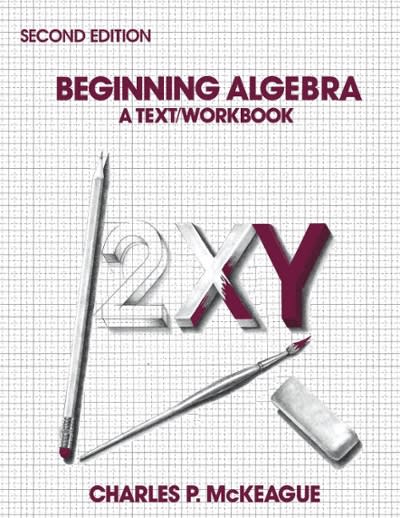Question
1. A Premier has six members of his caucus who are interested in joining a special committee. The committee is to consist of the premier
1. A Premier has six members of his caucus who are interested in joining a special committee. The committee is to consist of the premier himself and three other MLA's. The premier is considering how to create the committee to appear demographically diverse. The candidates are as follows: - Alice is a 42-year-old woman from Saskatoon who is of mixed English-Irish background. - Byron is a 25-year-old man from Regina. His parents immigrated from Trinidad. He is of mixed African-European-Indian race but self-identifies as "black". - Ciaran is a 60-year-old farmer from the Cypress Hills area. In spite of his Celtic name, he is the descendant of Norwegian settlers. - Darlene is a 30-year old Dene woman from the Fond-du-Lac First Nation. - Edward is a 33-year-old doctor working in Lipton. He is third-generation Chinese. - Fiona is a 49-year-old Cree woman living in Prince Albert. The Premier himself is from Saskatoon, 50 year old, and is of German origin. (Any resemblance to actual MLA's, past, present, or future, is entirely coincidental.) (a) List all the possible committees that could be constituted from these people. (You may use just the initial letter of each name, for brevity. Use "P" for the Premier.) Consider this list as a sample space. (b) Display the event that the committee is gender-balanced, by listing its atoms, (i.e. list all the possible committees that have an equal number of men and women). (c) Similarly, display the event that the committee includes at least one indigenous person, (d) the event that the committee includes (at least) one indigenous person and one visible minority person, (e) the event that the committee has equal representation from urban and rural communities, (f) the event that the committee includes both a woman and a visible minority, and (g) the event that the committee includes a visible minority woman. Notes: In the applications of the theory, it is important that the important information is inferred and extracted from a verbal description that may include irrelevancies. The use of common sense is expected, even though there might exist ambiguities. If you think there is more than one interpretation, say so in your answer, and explain why. Typical language in these situations is that "includes a X" means "includes at least one", i.e., one or more of individuals of type X. If "one and no more" is meant, the wording would be "includes exactly one". According to the Government of Canada, (Canadian) indigenous people are not considered to be a visible minority. The official definition states that visibility minority persons are "other than Aboriginal peoples, who are non-Caucasian in race or non-white in colour". It does not specify what is a Caucasian race, nor what skin tones are considered "non-white". The descriptions of the individuals above should be sufficient to judge their attributes. Urban means people living in cities, which in this case means Regina, Saskatoon, or Prince Albert. 1
2. Suppose I toss a pair of dice, one green and one red. Let Gi be the event that the green die comes up with number i, and let Ri be the event that the red die comes up with number i, where i is an integer from 1 to 6. (So, for example, G3means the event that the green die comes up with the number 3.) The sample space consists of pairs Gi Rj specifying the results of both dice. For each of the following events described in words, express it both as a Boolean expression involving Gi's and Ri's, and as a set of the elementary events that imply it. (For convenience, you may write the elementary events without the intersection sign, e.g. R2G3instead of R2 G3.) (a) A = {the sum of the faces is 12} (b) B = {neither of the faces shows a one} (c) C = {exactly one of the dice shows a six} 3. Let A, B, and C be three events such that A C = , P (A) = .3, P (B) = .7, P (C) = .7, and P (A B) = .2. Compute the following probabilities: (a) P (A B) (b) P (A C) (c) P (Ac) (d) P (Bc) (e) P (B C) (f) P (Ac Bc) (g) P (A Cc)
Step by Step Solution
There are 3 Steps involved in it
Step: 1

Get Instant Access to Expert-Tailored Solutions
See step-by-step solutions with expert insights and AI powered tools for academic success
Step: 2

Step: 3

Ace Your Homework with AI
Get the answers you need in no time with our AI-driven, step-by-step assistance
Get Started


